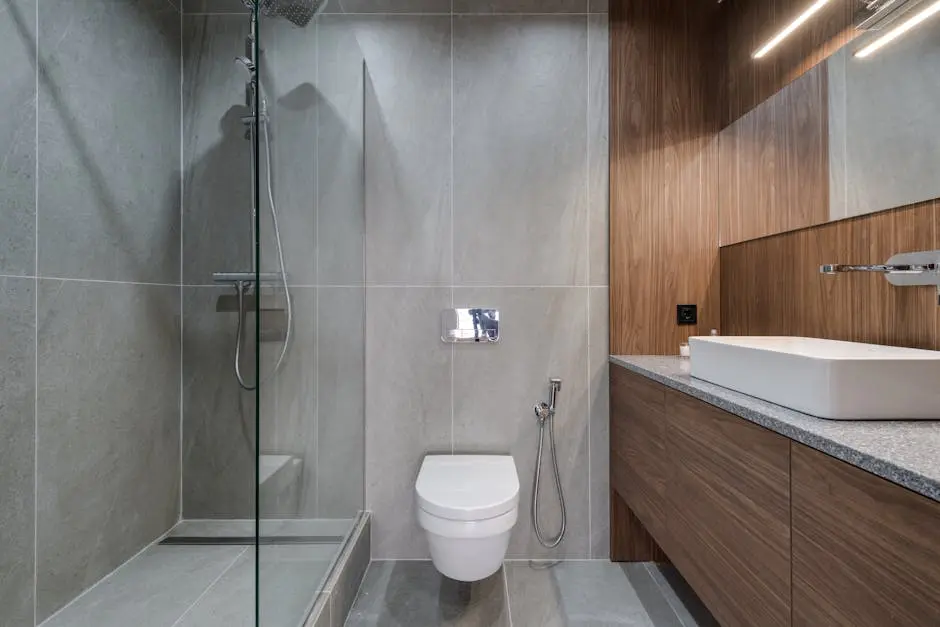How Can Walk-In Showers Help Elderly Individuals Maintain Independence?
As people age, maintaining independence is vital for their well-being. One practical solution that has gained popularity is the walk-in shower. But how exactly can walk-in showers support elderly individuals in staying independent? This blog will explore the benefits and features of walk-in showers that can make a remarkable difference.
Understanding Mobility Challenges
Elderly individuals often encounter mobility challenges that can complicate everyday tasks. These difficulties can stem from various factors including arthritis, weakened muscles, or balance issues. As a result, routine activities like bathing become daunting, leading to feelings of frustration and dependence on others.
Mobility challenges often manifest in small but significant ways. For instance, lifting legs over a traditional bathtub can be risky and painful. Many seniors face the fear of falling, which discourages them from maintaining their hygiene routine. Addressing these concerns is crucial for fostering independence.
Understanding the specifics of mobility challenges allows caregivers and family members to identify effective solutions. By focusing on creating safe environments, we can help elderly individuals preserve their autonomy and dignity while navigating daily activities like bathing.
Benefits of Walk-In Showers
Walk-in showers are designed with safety and ease of use in mind. One primary benefit is the low entry threshold, which allows for easy access without the need to lift one’s legs too high. This simple modification significantly reduces the fear of falls, making it easier for elderly individuals to bathe independently.
Moreover, walk-in showers can be equipped with various features like handheld showerheads and adjustable seating, further enhancing comfort. These additions ensure that bathing becomes a pleasurable, rather than a stressful, experience, allowing seniors to enjoy personal care without assistance.
Another significant advantage of walk-in showers is their spacious design. Unlike traditional bathtubs, they offer ample space to move around, which is especially beneficial for seniors who may need assistance or prefer to shower with a caregiver. This design maintains dignity and fosters a sense of independence.
Safety Features to Consider
When considering a walk-in shower, it’s essential to look for specific safety features. Grab bars are a vital addition as they provide support and stability while entering or exiting the shower. These simple tools can drastically reduce fall risks, making them a must-have in any walk-in shower installation.
Additionally, non-slip surfaces are crucial for ensuring safety. Slippery floors can be hazardous, especially when wet. Selecting materials with textured finishes can enhance grip, offering peace of mind to those using the shower. It’s all about making each shower experience as safe as possible.
Accessible controls are another feature to prioritize. Many elderly individuals struggle with fine motor skills, making it challenging to turn knobs or reach overhead fixtures. Installing lever-style faucets or touch-activated controls can streamline the bathing process, ensuring the individual can manage the shower independently.
Customizing Walk-In Showers for Individual Needs
Customization is key to maximizing the benefits of walk-in showers. Each elderly person’s needs may differ due to varying mobility limitations or personal preferences. Options like shower benches, adjustable showerheads, and handheld sprayers can be tailored to the individual’s unique requirements, promoting comfort and independence.
Furthermore, consider incorporating additional storage within the shower area. Shelving for soap, shampoo, and other essentials not only keeps items within reach but also encourages individuals to shower without needing help. Empowering seniors with these customizations fosters a sense of ownership over their personal care routines.
Lastly, aesthetic choices shouldn’t be overlooked. Design elements such as tiles, colors, and fixtures can transform a walk-in shower into a pleasant and inviting space. When elderly individuals feel comfortable and happy in their bathing environment, it further encourages them to maintain independence in their hygiene practices.
Encouraging Independence with Independence
Creating an environment that encourages independence is one of the primary goals of installing walk-in showers. By providing the necessary tools and features, elderly individuals can take charge of their bathing routines, which promotes their self-esteem and confidence.
The freedom to shower at one’s convenience without assistance fosters a sense of normalcy and control in daily life. Additionally, it minimizes reliance on caregivers, which can be a burden for both parties. When an elderly person can simply step into a safe shower, their quality of life can dramatically improve.
In essence, walk-in showers facilitate an important transition for many elderly individuals—from dependence to independence. It’s not just about functional advantages; it’s also about the emotional benefits that come from reclaiming autonomy in personal care. By integrating these showers into their homes, families can empower their loved ones significantly.
Final Thoughts on Walk-In Showers for Independence
In summary, walk-in showers offer significant advantages for elderly individuals, enhancing their safety and independence. By addressing mobility concerns and providing customizable options, these showers can transform daily routines into enjoyable experiences. It’s crucial for caregivers and families to consider these improvements as they seek ways to support their loved ones.

